What Snot Is and What Its Color Means
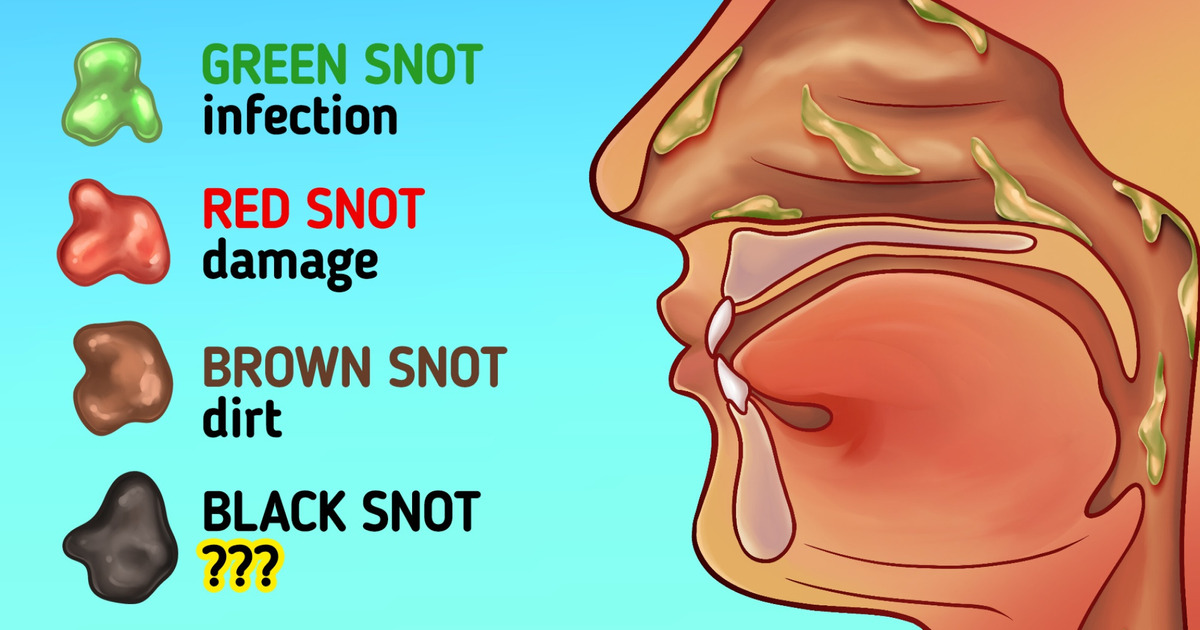
If you have ever had a runny nose, you probably know what snot is and you have probably noticed that it can change color and texture from time to time. It can be transparent, green, black, or other colors in between.
5-Minute Crafts will tell you more about what snot is, why our body needs it, and what its color means. Don’t miss the bonus at the end of the article where we clear up a fundamental question: should you, or should you not, eat boogers?
❗ Important: This article is for informational purposes only and doesn’t replace professional advice.
What is snot?
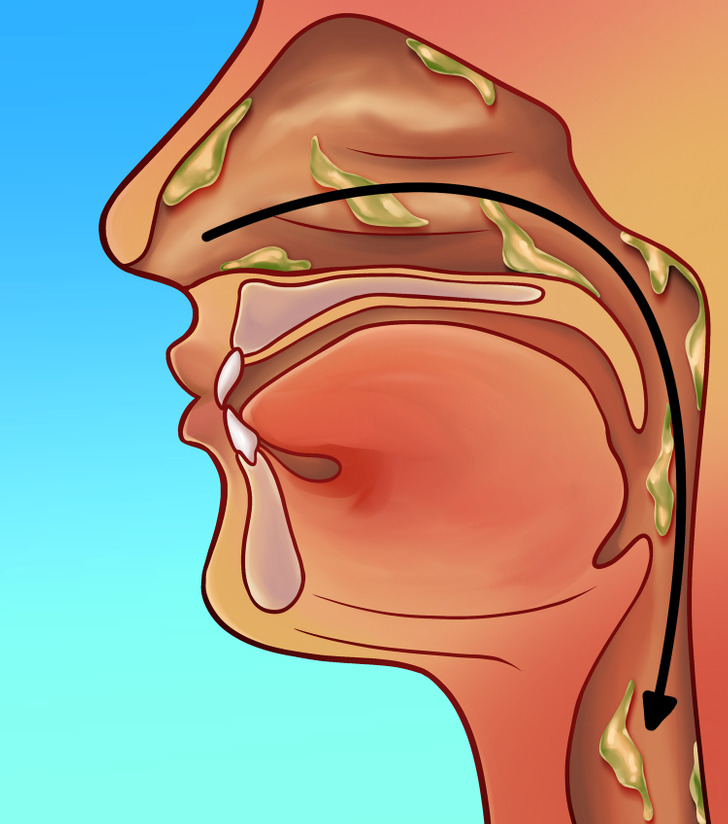
Snot is mucus that forms in the nose. It constantly moves through our body: first, it goes from the sinuses to the nose, then to the back of the nose and throat, only to end in the stomach.
The body of a healthy person usually produces about 1-2 liters of mucus daily. However, inflammation of the upper respiratory tract can cause mucus production to double.
The production of extra mucus due to infection is a protective function of the body. The main task of this function is to detain bacteria and get rid of them. Excess mucus comes out of the nose in the form of snot.
Why we need it
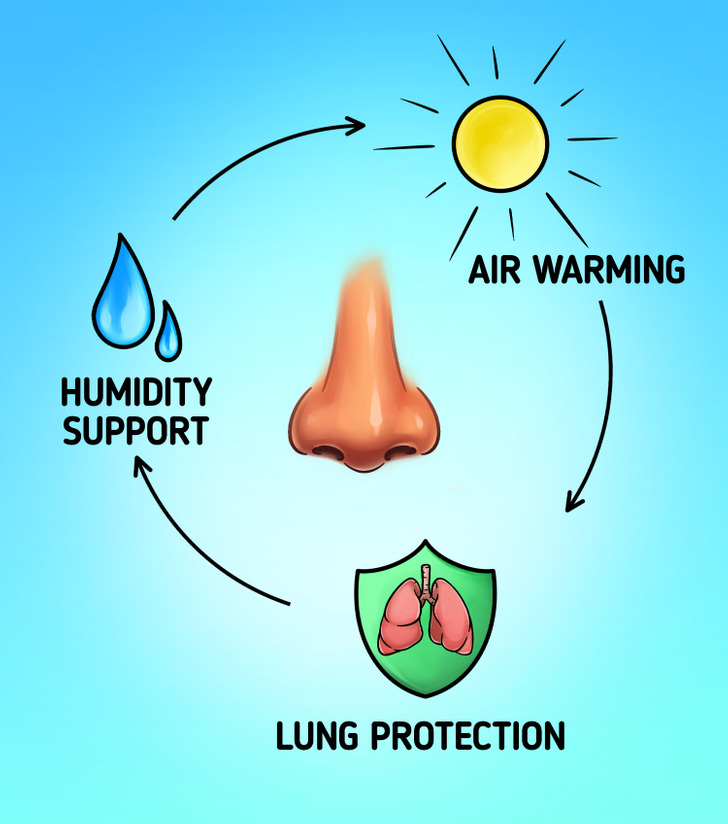
Mucus has several important functions: maintaining the moisture of the nasal mucosa, warming the air that a person breathes, and protecting the lungs from dust, dirt, and germs.
In addition to protecting against potential infections, mucus helps your nose function properly. For example, mucus picks up specific chemicals that represent different odors and directs them to smell receptors high up in the nose.
What does the color of the snot say
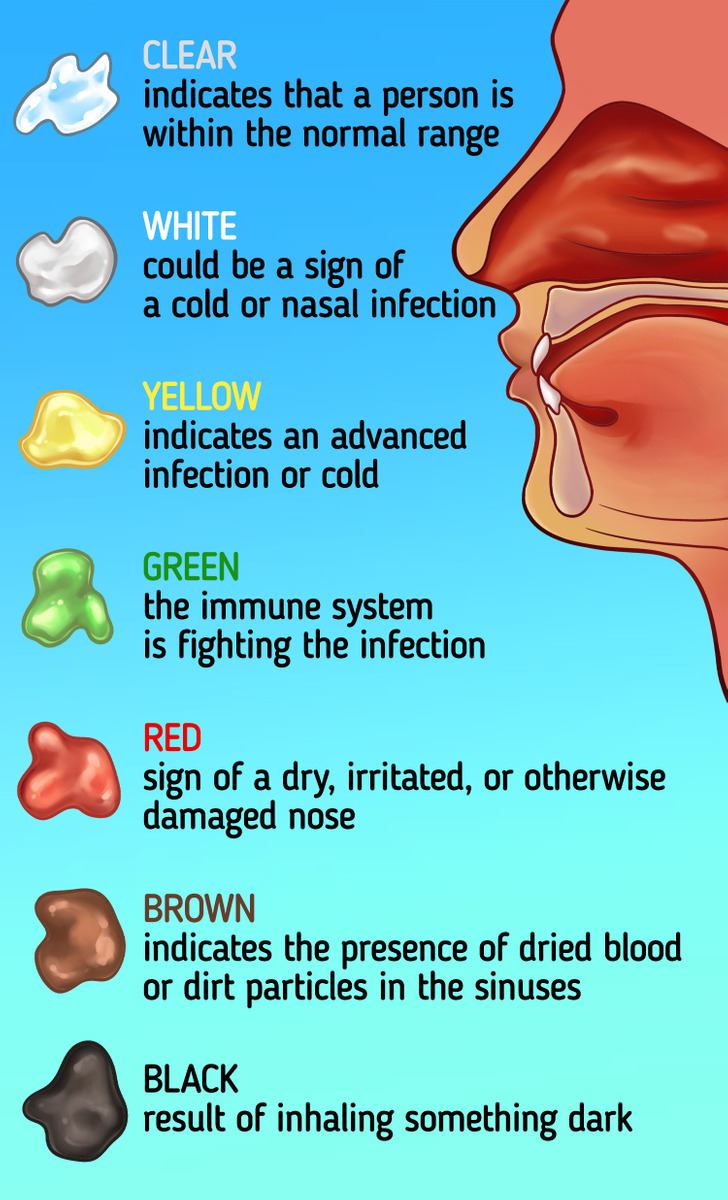
The color of your snot can tell you about many processes in your body. For example, if you have allergies, a nosebleed, a cold, or an infection. That being said, always bear in mind that it is impossible to independently determine the type of infection by the color of the snot.
- Clear mucus. Clear and clean mucus indicates that a person is within the normal range. A healthy nasal secretion is made up of water, proteins, and dissolved salts, and our bodies always produce it. It is also important to remember that excess clear mucus can be a sign of an allergy.
- White mucus. Changes in the color and viscosity of nasal secretions may be a sign of a cold or nasal infection. The color change occurs as a result of an increased concentration of white blood cells that fight infection. An increase in the secretion of mucus indicates that the body is doing its job of collecting and removing enemy cells.
- Yellow mucus. Yellow mucus may indicate an advanced infection or cold. White blood cells fight germs and try to protect the body. After doing their job, they get into the snot and give it a yellowish tint.
- Green mucus. The snot may become green and thick due to the activation of the immune system, which fights the infection. The green color of the snot is associated with a high content of dead leukocytes and dead bacteria in the mucus.
- Pink or red mucus. Red or pink mucus can signal a dry, irritated, or otherwise damaged nose. This may be due to various things—for example, infection, frequent blowing, chafing, or physical injury. Also, red or pink discharge from the nose can be caused by weather that is too cold or dry.
- Brown mucus. Brown mucus may indicate the presence of dried blood or dirt particles in the sinuses.
- Black mucus. Dark or black mucus can accumulate in the nasal mucus as a result of inhaling something dark, like dust. Also, black nasal mucus can be a sign of a fungal infection. However, these infections are pretty rare.
Bonus: To eat or not to eat boogers
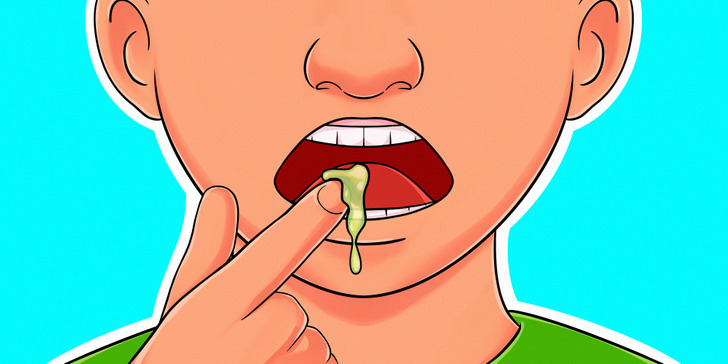
To date, there is not a lot of research that has been devoted to eating boogers. However, Scott Napper, an associate professor of biochemistry at the University of Saskatchewan, suggests that eating them may be beneficial. Napper says that, in theory, eating boogers could help the body be more prepared to fight future disease-causing bacteria. But there are no serious or reliable scientific studies that could confirm this theory.
Also, sometimes picking your nose can be a more convenient way to clear your nose than using tissues. If so, be sure to wash your hands afterward to avoid spreading potential infectious diseases.